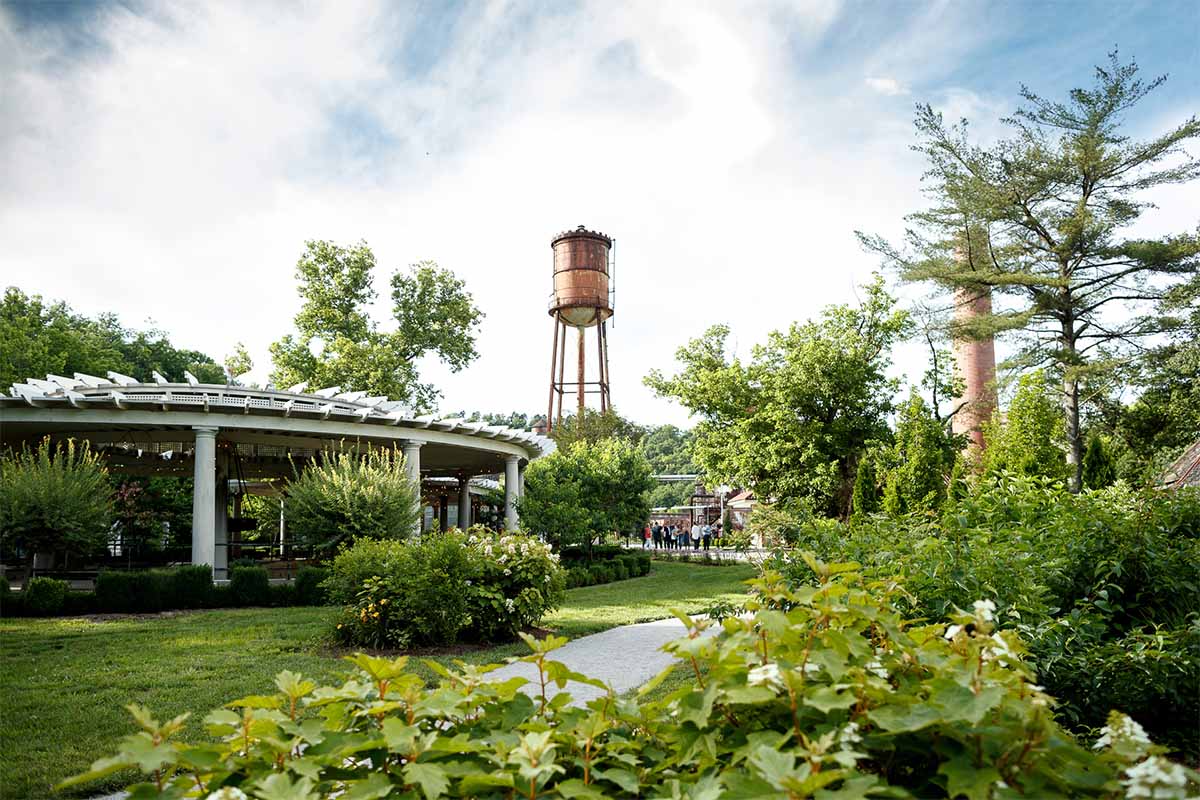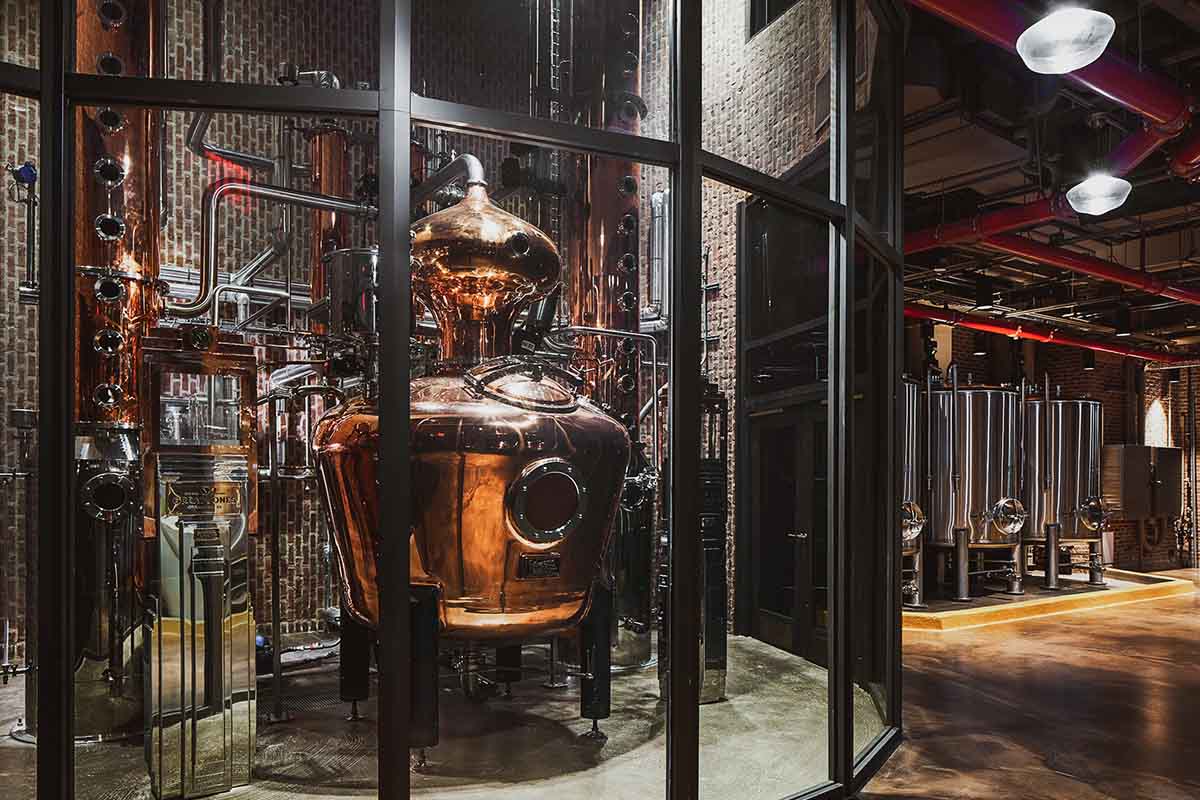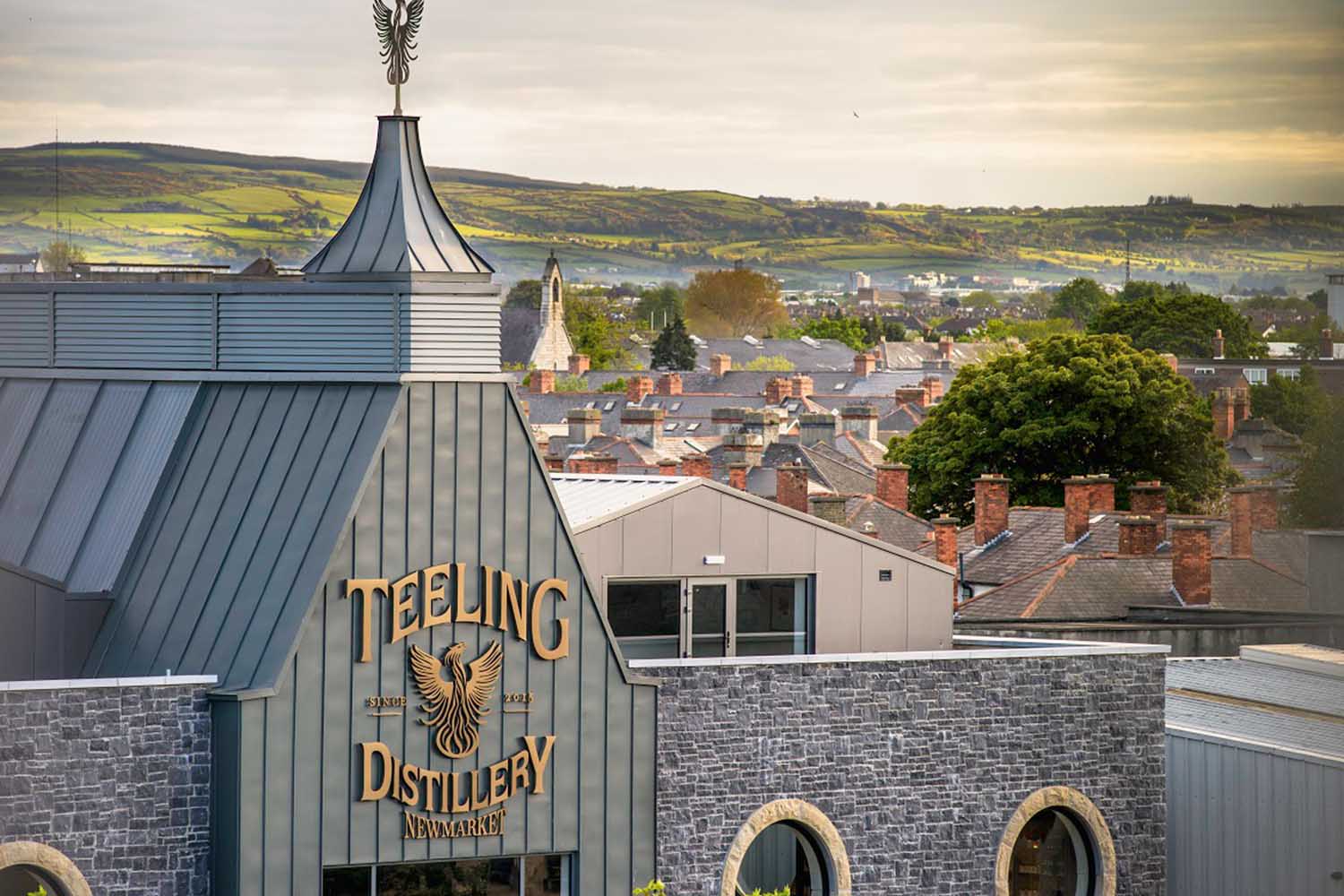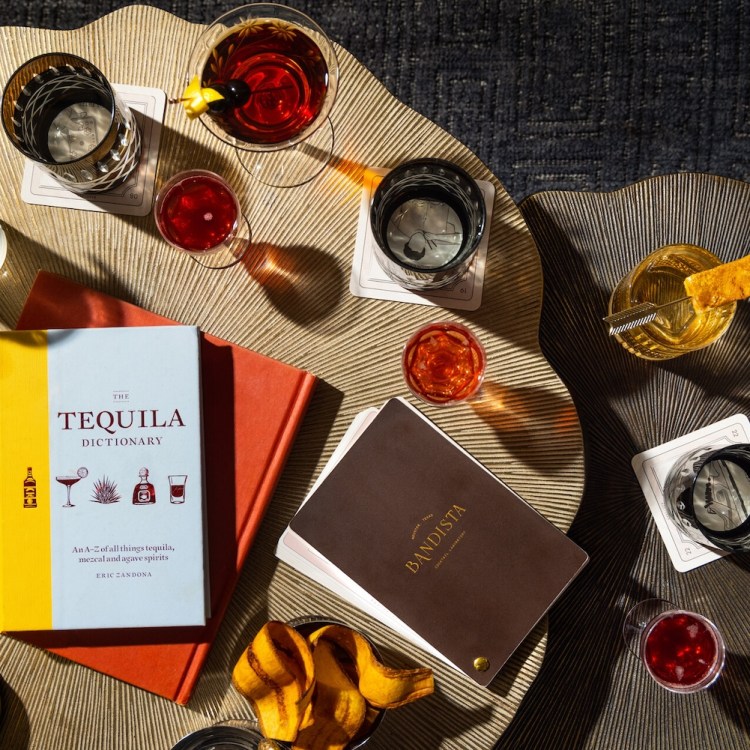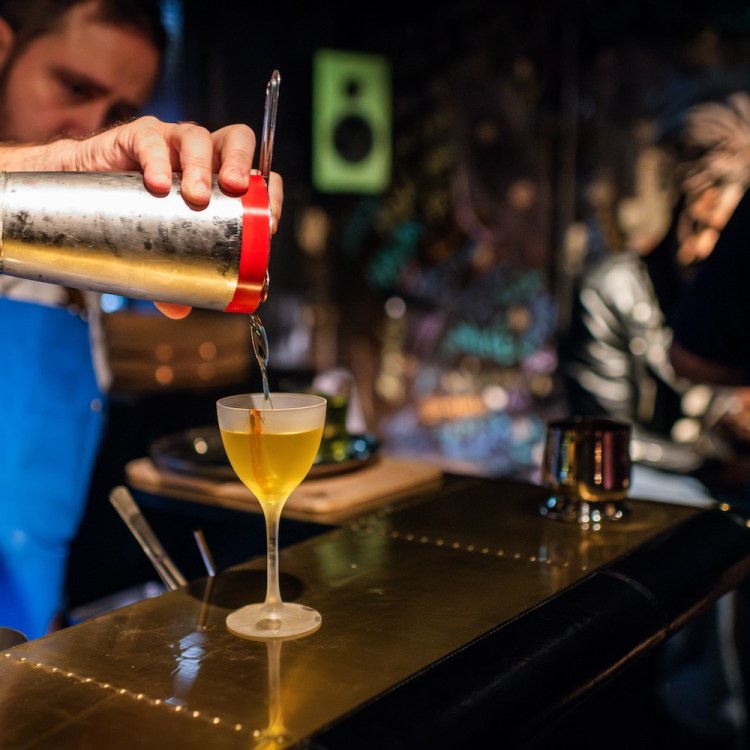Kentucky’s classic rolling green hills are not where you’d expect to find a medieval castle — especially not one that houses a distillery. But the sight of turreted and crenelated Castle & Key, rising beside sleepy Glenns Creek, is just one of many charming surprises in store for visitors to Kentucky’s most exciting — and oldest — bourbon destination.
Built in 1887 by Col. E.H. Taylor, whose name you might recognize from the eponymous brand that’s owned by Buffalo Trace, the distillery that’s now known as Castle & Key was purposely designed to attract tourists, a true first. Bourbon tourism simply was not a thing back then; most whiskey distilleries were solely functional.
Taylor’s vision was different. Having already opened and run multiple distilleries by the 1880s, he knew what was required to make excellent bourbon. But he also wanted to elevate its reputation.
“[At the time] bourbon is seen as kind of this backwoodsy American spirit,” explains Brett Connors, Castle & Key’s head blender and brand ambassador. “If you were affluent, you drank cognac, brandy, scotches, Eaux de vie, rye, rum—they were all seen as higher quality than what was coming out of our state. And it made him really frustrated.”
Inspired by a period of living and working in Germany, where he encountered the country’s rich history and budding beer tourism industry, Taylor built a true showpiece. “When you live in Europe for a year, you have a tendency to become enamored with architecture,” Connors says. The castle-like distillery, which wouldn’t look out of place at a modern-day theme park, attracted affluent and powerful people who became the first bourbon tourists. Taylor’s distillery represented bourbon’s brightest moment and highest potential.
And just a few decades later, it was in ruins. Prohibition and the industry consolidation that followed led to the distillery’s closure in the early 1970s. It eventually passed into the hands of a salvage company that stripped it for parts. When Will Arvin discovered the site in 2013, it was so overgrown with vegetation he needed a flashlight to see, even in broad daylight. “It was shocking to think that the property could deteriorate to such ruins after only 40 years of abandonment,” Arvin recalls. “But even amongst all the decay, you could tell the place had a real spirit and great bones.”
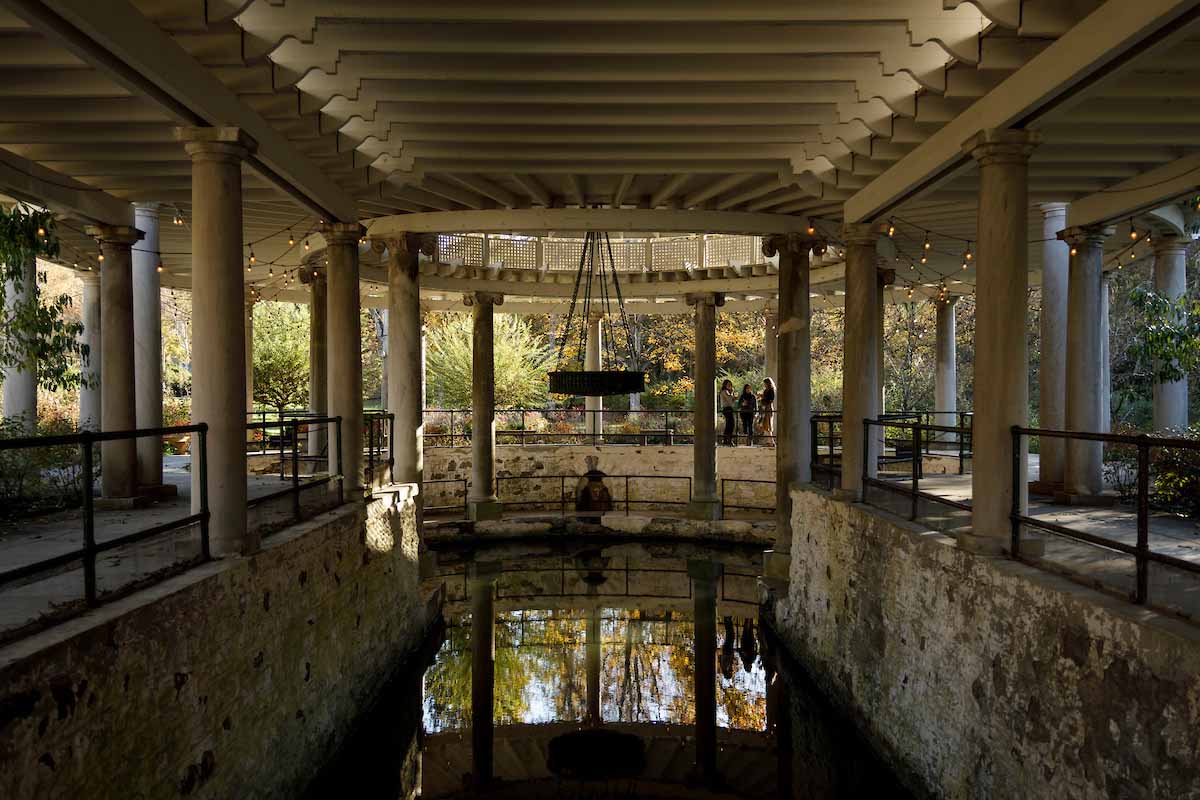
Over the next few years, Arvin and his then-partner Wes Murry sank millions into bringing the distillery back to life. While some buildings were so ruined they couldn’t be saved, the castle itself and many of the site’s other structures have been lovingly restored, some to their original purposes, others taking on new roles — like Taylorton Station. The train depot that once welcomed elite guests from their private railcars now houses Castle & Key’s top-notch cocktail bar, which offers a variety of original drinks made by veterans of some of Kentucky’s best venues.
Visitors can take their drinks to go and sip while wandering Castle & Key’s grounds — currently well-pruned, though still retaining much of the lush greenery that Arvin first encountered. There’s a quarter-mile botanical trail that winds its way along Glenns Creek, interspersed with shady benches and chairs for contemplative relaxation. The trailhead sits at the colonnaded springhouse, by far the coolest outdoor space on-site, collecting the limestone-rich water used in whiskey production. A short walk away, the sunken garden beckons with Instagram-ready landscaping and a picturesque fountain; come on one of the mornings that they offer yoga classes and perfect your tree pose with the castle as your backdrop.
While Castle & Key offers tours, there’s no need to book one to enjoy its grounds, cocktail bar and visitor center shop, which is housed in the former boiler room, complete with coal chutes and the imposing iron skeleton of the old boiler itself. They’re all open to the public Thursday through Sunday. On the first Wednesday of the month from April to September, the distillery hosts musical acts on the lawn by the springhouse, welcoming guests to roll up with a blanket, bring a picnic or take advantage of food truck options to go with their cocktails and pours.
And about those pours: Castle & Key’s spirits pay homage to Taylor’s legacy while remaining original and innovative. The Small Batch Bourbon, launched in March after four years of maturation, has a mashbill of 73% white corn, 17% malted barley and 10% rye. Each batch has a unique flavor profile; Batch 1 highlighted citrus zest and a cereal-forward character with tingling green peppercorns. Restoration rye, made with 63% rye, 20% malted barley, and 17% white corn, showcased notes of cooked cherries and caramel sauce atop vanilla ice cream in its first batch. The distillery’s various gins showcase seasonal botanicals, many of them grown on-site in the ruins of an old warehouse, and even its vodka is designed to appeal to serious drinkers, being made from scratch with a true whiskey mashbill instead of neutral grain spirit.
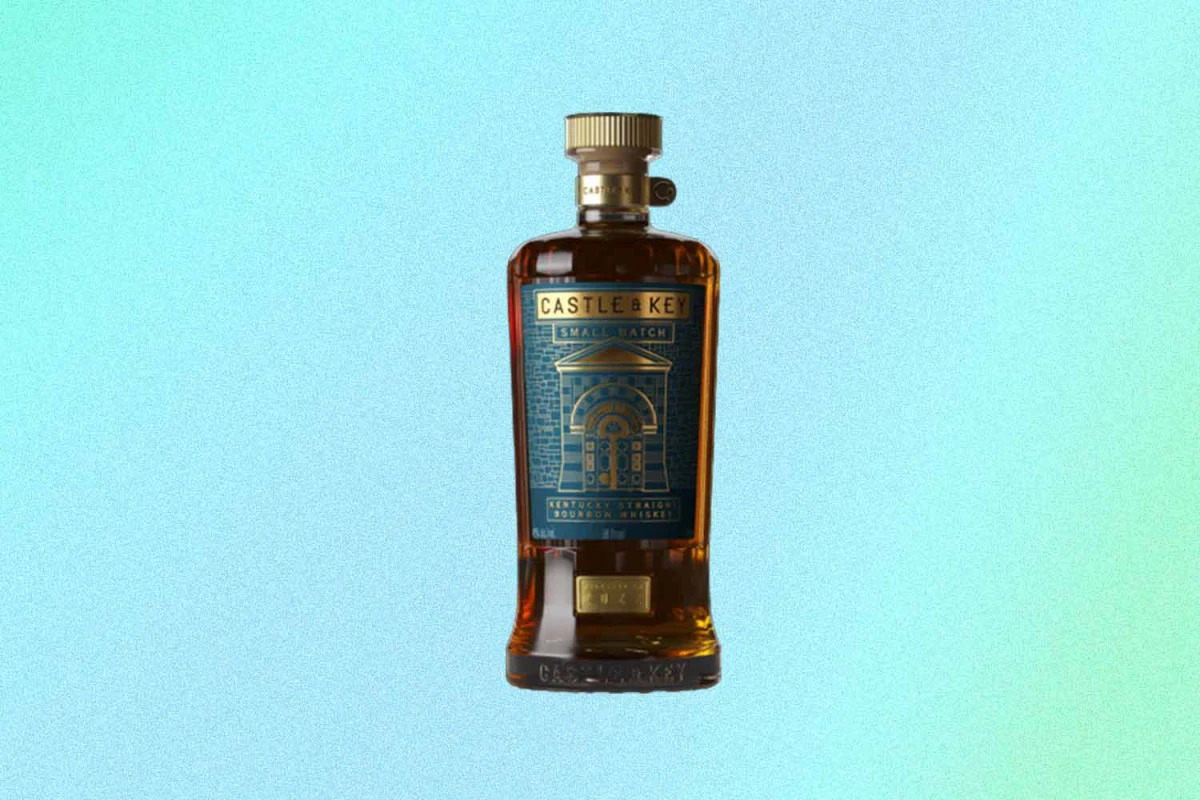
The care put into the spirits is as palpable as the energy that has revitalized the entire site. It’s a comeback story like none other in bourbon history, with parallels that echo across the centuries. “You have to take big swings sometimes,” Connors says. “I don’t think Taylor was afraid of taking a big swing, and I don’t think Will was either.”
While Castle & Key’s aesthetic stands out on the Kentucky bourbon trail, it’s not the only visually stunning whiskey distillery. Check out some other striking sites you can visit in Scotland, Ireland and, surprisingly, New York City.
The Macallan Distillery
The single malt scotch that’s known for some of the flashiest bottles has a home to match. Set in the heart of Scotland’s Speyside region, the distillery’s undulating turf roof blends in with the landscape, while inside, the soaring stillhouse, interactive sherry cask experience, and cavernous barrel room elevate the typical tour to new heights. A restaurant and bar offer hundreds of whiskies dating back decades, and if you’re looking for something to make a visit extra-special, Macallan offers VIP itineraries ranging from salmon fishing to chauffeured tours of the region.
Teeling Distillery
Nestled in the heart of The Liberties district in Dublin, this distillery can be easily spotted by the metal phoenix set atop the pitched gable entrance. The mythical creature isn’t just decoration; it represents the fact that Teeling brought whiskey distilling back to Ireland’s capital decades after it had disappeared. Inside, the distillery tour allows visitors to get up close to the mash tun, fermentation tanks and other equipment before welcoming them into a spacious tasting lounge — complete with snug booths — and high-end cocktail bar where you’ll want to snap a photo of every drink.
Great Jones Distilling Co.
New York City has been home to several whiskey distilleries for years, but until 2021 the borough of Manhattan lacked a single one. That changed with the opening of Great Jones, which transformed an 84-year-old building into a sleek, stacked urban distillery. It’s a top-to-bottom feast for the eyes, from the shiny copper still ensconced behind explosion-proof glass to the psychedelic art installation called “Alchemy.” It’s also a literal feast, with a high-end restaurant and multiple bars restaurant occupying the rest of the space. Along with tours, Great Jones offers bourbon and food pairings and cocktail classes.
Join America's Fastest Growing Spirits Newsletter THE SPILL. Unlock all the reviews, recipes and revelry — and get 15% off award-winning La Tierra de Acre Mezcal.
